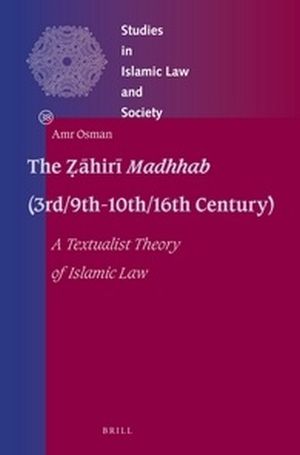
In this book, Amr Osman seeks to expand and re-interpret what we know about the history and doctrine of the Ẓāhirī madhhab. Based on an extensive prosopographical survey, he concludes that the founder, Dāwūd al-Ẓāhirī, was closer in profile and doctrine to the Ahl al-Ra’y than to the Ahl al-Ḥadīth. Furthermore, Ibn Ḥazm al-Andalusī may have had a damaging effect on the madhhab, which never actually developed into a full-fledged school of law. By examining the meaning of ‘ẓāhir’ and modern scholarship on ‘literalism’, he challenges the view that Ẓāhirism was literalist, proposing ‘textualism’ as an accurate reflection of its premises, methodology, and goals as a hermeneutical and legal theory.